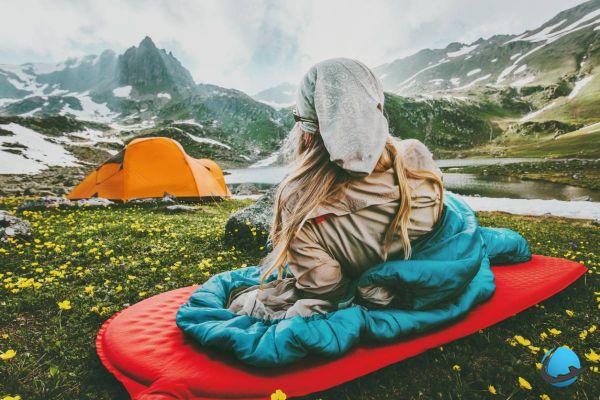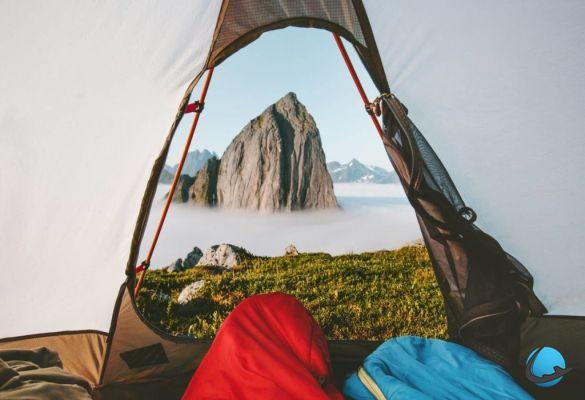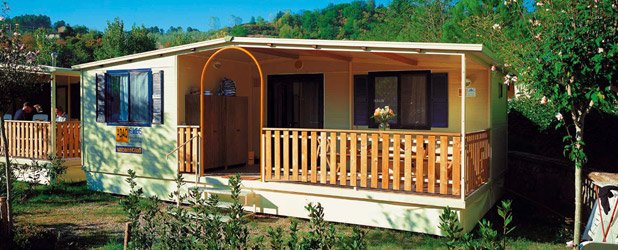
Sleeping under the stars is arguably one of the most unforgettable experiences in a lifetime. Recharge your batteries far from daily stress, let yourself be lulled by the song of nature, be awakened by a splendid sunrise, take a deep breath of fresh air ... These are the small pleasures of a stay in the open air!
If camping and bivouac are exciting activities, you still need to be well equipped or else the experience will turn into a real nightmare. The sleeping bag is one of the essential items of equipment to plan for a trip to nature. It is a great ally to benefit from restful nights in relatively harsh conditions. With the wide choice of models available on the market, it does not seem easy to make the right choice. In this article, discover all the criteria to take into account to choose the sleeping bag best suited to your needs and the intended destination.
Choose your sleeping bag according to the weather conditions
It is important to learn about the climatic conditions you will face once there. You must as well take stock of the season during which you will be traveling. Indeed, the type of sleeping bag suitable for a stay in summer will be different from a model for a trip in winter. The choice will also be different if you go in a rainy season.
A humid climate
If the destination you are planning to travel to has fairly humid weather, it is advisable to choose a synthetic fiber filling. This is the best choice if you are going for a mountain hike. This type of sleeping bag offers excellent indoor and outdoor moisture management. He is recognized for perfect insulation, even wet. In addition, drying and cleaning do not present any particular difficulty.
A dry or continental climate
For destinations with a dry or continental climate, it is best to opt for a sleeping bag with a natural feather filling (goose or duck). This type of sleeping bag is particularly light. It has strong insulation performance. It is also a sustainable investment over the long term. In addition, however, it can be sensitive to humidity.
There are a variety of sleeping bags suitable for different climates on the market. Consult dedicated e-commerce sites to have your sleeping bag at attractive prices: light sleeping bags, special cold for very cold temperatures, mummy sleeping bags to limit heat loss, single or double sleeping bags , etc.

Choose the right sleeping bag: consider the comfort temperature
On the label of each sleeping bag, you will find information on the comfort temperature. There are thus -10 sleeping bags or very cold sleeping bags for extreme weather conditions, available from brands such as Yeti, Carinthia or Millet, sleeping bags suitable for temperatures between 0 and -10 ° and d 'other models designed for less harsh climatic conditions, all from recognized brands, such as Lafuma, Nordisk, Valandré, etc.
Comfort temperature
This is the optimum temperature at which you can sleep relaxed, without feeling the slightest unpleasant feeling of cold. To put it simply, it is the comfort temperature that should serve as a benchmark.
The comfort limit temperature
This indicates the temperature at which you should curl up on yourself to be comfortable and not feel the cold.
Extreme temperature
It indicates the temperature at which you start to feel the cold inside your sleeping bag, even when you are curling up on yourself.
To choose the most suitable comfort temperature, it is important to find out about the minimum temperatures of the destination where you plan to go. Also remember to take into account the temperature differences that may exist between night and day. For example, if you plan to spend the night in a tent in summer, with a temperature of 10 ° C at night, you will need a sleeping bag with a comfort temperature of 12 ° C as well as a temperature limit at around 5 ° C.
Of course, everything will depend on where you will spend your nights: in a private campsite? In the wild? In an altitude bivouac? Under a tent ?
The weight and size of your sleeping bag
Weight and size are also important criteria when buying a sleeping bag. Again, it will all depend on the type of trip you plan to take and the destination.
In most cases, you will need to carry your sleeping bag on your back, and this, during many hours of walking. Thus, it is important to choose a model that can be compressed to the maximum. You will find ultralight sleeping bags on the market that do not exceed 1 kg.
However, you may be traveling by car or using any means of transport. In this case, you can prioritize your comfort and well-being before the weight and volume of your sleeping bag.

The shape of the sleeping bag
For more convenience, choose a sleeping bag adapted to your size. Also, be aware that the larger your sleeping bag, the more likely you are to catch a cold. Choose a model that conforms to the shape of your body.
There is what is called a "mummy bag". It is a model widened at the level of the shoulders and equipped with a hood. You will also find models one and two places. You can also opt for an elephant's foot bag that covers only the legs and pelvis. If you buy this type of sleeping bag, consider bringing a puffer jacket and a hat to cover your upper body. In addition, the rectangular sleeping bag remains a great classic which can be practical if you choose a light and well insulating model.
Some practical tips
It is recommended to use an insulating mat or a ground sheet to reduce thermal bridges and benefit from better insulation. If you are going to a destination where the temperature is particularly cold, consider putting on a silk or cotton bag, or a sac à viande before slipping into your sleeping bag. Avoid sleeping on the floor as much as possible. You risk catching colds and getting sick. If your sleeping bag is wet, don't wait to dry it and ventilate it properly. This will prevent the proliferation of bacteria and bad odors. When you store your sleeping bag, take it out of the compression bag and unfold it. Those are basic maintenance procedures, but which can ensure the durability of your equipment.

















![My 8 tips for cheaper travel! [tested and approved]](/images/posts/63b60c950e59451b29d32915089da8ff-0.jpg)







